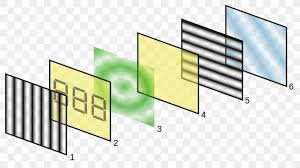Passive and Active Matrix Displays
Blaze Display Technology Co., Ltd. | Updated: Nov 27, 2018
The Passive-matrix type LCDs works with a simple grid so that charge can be supplied to a specific pixel on the LCD. The grid can be designed with a quiet process and it starts through two substrates which are known as glass layers. One glass layer gives columns whereas the other one gives rows that are designed by using a clear conductive material like indium-tin-oxide.
In this display, the rows otherwise columns are linked to ICs to control whenever the charge is transmitted in the direction of a particular row or column. The material of the liquid crystal is placed in between the two glass layers where on the external side of the substrate, a polarizing film can be added. The IC transmits a charge down the exact column of a single substrate & the ground can be switched ON to the exact row of the other so that a pixel can be activated.
The passive-matrix system has major drawbacks particularly response time is slow & inaccurate voltage control. The response time of the display mainly refers to the capability of the display to refresh the displayed image. In this type of display, the simplest way to check the slow response time is to shift the mouse pointer fast from one face of the display to the other.
Active-matrix type LCDs mainly depends on TFT (thin-film transistors). These transistors are small switching transistors as well as capacitors which are placed within a matrix over a glass substrate. When the proper row is activated then a charge can be transmitted down the exact column so that a specific pixel can be addressed, because all of the additional rows that the column intersects are switched OFF, simply the capacitor next to the designated pixel gets a charge.
The capacitor holds the supply until the subsequent refresh cycle & if we cautiously manage the sum of voltage given to a crystal, then we can untwist simply to permit some light through. At present, most of the panels offer brightness with 256 levels for each pixel.


